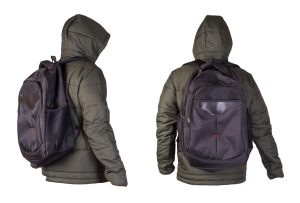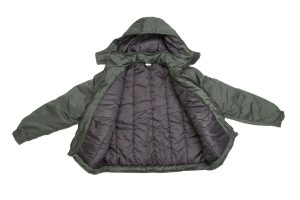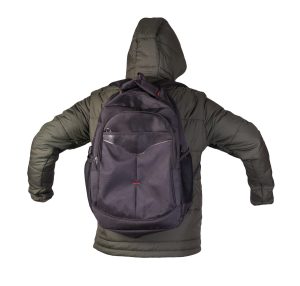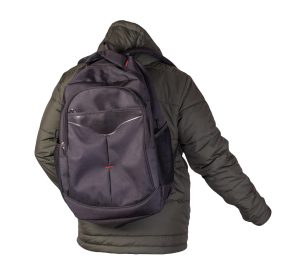Arc’teryx jackets are known for their exceptional quality and performance in outdoor activities. Whether hiking, skiing or enjoying the great outdoors, your Arc’teryx jacket may require a thorough cleaning to maintain its functionality and appearance. In this article, we will guide you on how to wash your Arc’teryx jacket properly, ensuring it stays clean and performs at its best.
Arc’teryx jackets are designed with advanced materials and innovative technologies to provide optimal protection against the elements. However, over time, dirt, sweat, and other contaminants can accumulate on the surface of the jacket, compromising its performance. Regular washing helps to remove these impurities and maintain the jacket’s functionality.
Why Washing Your Arc’teryx Jacket Is Important
Keeping your Arc’teryx jacket clean is crucial for several reasons. Firstly, dirt and grime can clog the jacket’s pores, reducing its breathability. This can lead to discomfort and excessive sweating during physical activities. Additionally, regular washing helps to remove oils and sweat stains, preventing odours from developing.

Understanding the Washing Instructions
Before you begin washing your Arc’teryx jacket, it’s important to familiarize yourself with the care labels and symbols provided by the manufacturer. These labels provide specific instructions on cleaning and caring for your jacket based on its materials and construction.
Types of Arc’teryx Jackets
Arc’teryx produces a variety of jacket models, each designed for different purposes and weather conditions. Common types include:
- Hardshell jackets: These are made from waterproof and windproof materials, providing excellent protection against rain and snow.
- Softshell jackets: Softshell jackets offer enhanced breathability and flexibility, making them suitable for aerobic activities in mild weather conditions.
- Insulated jackets: Insulated jackets provide warmth in cold environments and are often used as outer layers in extreme weather conditions.
Care Labels and Symbols
Arc’teryx jackets come with care labels that provide valuable information on washing and caring for your specific model. These labels may include symbols representing machine washing, hand washing, dry cleaning, ironing, and more. Familiarize yourself with these symbols to ensure you follow the correct cleaning method.
Choosing the Right Detergent
When washing your Arc’teryx jacket, using a detergent specifically formulated for technical outdoor garments is crucial. Regular detergents can leave residues that affect the jacket’s performance and water repellency. Look for detergents that are free from additives, fragrances, and fabric softeners to preserve the jacket’s functionality.
Preparing Your Jacket for Washing
Proper preparation is essential before washing your Arc’teryx jacket. Follow these steps to ensure the best results:

Emptying the Pockets and Zipping Up
Before washing, check all pockets and remove any items. Leaving objects in the pockets can cause damage to the jacket or the washing machine. Additionally, zip up all zippers to prevent snagging and potential damage during the washing process.
Removing Stains or Spots
If your Arc’teryx jacket has visible stains or spots, it’s important to treat them before washing. Gently dab the affected areas with a mild stain remover or a mixture of water and a mild detergent. Avoid using harsh chemicals or bleach, as they can damage the jacket’s fabric.
Patching Small Tears or Holes
Inspect your jacket for any small tears or holes. If you find any, consider patching them before washing them. Use a patch kit specifically designed for outdoor gear and follow the instructions. Repairing these small damages will help maintain the jacket’s integrity.
Machine Washing Your Arc’teryx Jacket
When machine washing your Arc’teryx jacket, follow these steps to ensure a thorough yet gentle cleaning:

Selecting the Appropriate Cycle
Set your washing machine to a gentle or delicate cycle. This helps minimize agitation and reduces the risk of damaging the jacket’s materials. Avoid using a high-speed or heavy-duty cycle, as it can stress the fabric unnecessarily.
Using the Right Water Temperature
Check the care label to determine the appropriate water temperature for washing your Arc’teryx jacket. In most cases, using cold or lukewarm water is recommended. Hot water can cause the jacket’s fabrics to shrink or lose their properties.
Adding the Detergent
Measure the appropriate amount of technical detergent and add it to the washing machine. Be sure to follow the detergent manufacturer’s instructions for the correct dosage. Too much detergent can leave residues, while using too little may not effectively clean the jacket.
Washing and Rinsing
Start the washing machine and let it complete the cycle. Once the cycle is finished, run an additional rinse cycle to remove all detergent residues from the jacket. Excess detergent can affect the jacket’s breathability and water repellency.
Avoiding Fabric Softeners
Fabric softeners should be avoided when washing Arc’teryx jackets. These products can leave residues interfering with the jacket’s performance and water repellency. Instead, opt for technical fabric conditioners specifically designed for outdoor gear if you need one.
Drying Your Arc’teryx Jacket
Proper drying techniques are essential to preserve the integrity and functionality of your Arc’teryx jacket. Follow these steps to ensure a safe and effective drying process:

Removing Excess Water
After washing, gently squeeze the excess water from the jacket. Avoid wringing or twisting the fabric, as this can damage the jacket’s construction. Instead, press the jacket between your hands, place it on a clean towel, and roll it up to absorb the water.
Air Drying vs. Tumble Drying
Arc’teryx recommends air drying your jacket whenever possible. Hang it in a well-ventilated area away from direct sunlight or heat sources. If you need to speed up the drying process, use a low heat setting on a clothesline or drying rack. Tumble drying is generally not recommended, as it can subject the jacket to excessive heat and agitation. However, some Arc’teryx jackets may be tumble-dried on low heat with specific instructions. Always refer to the care label for accurate information.
Using a Drying Rack
If you air-dry your jacket, a drying rack can help maintain its shape and prevent creases. Gently place the jacket on the rack, ensuring it is evenly spread out. Avoid using hangers, as they can stretch the fabric or leave marks.
Maintaining the DWR Coating
Arc’teryx jackets often feature a durable water-repellent (DWR) coating on the outer fabric. This coating helps water bead up and roll off the surface of the jacket. Over time, the DWR coating may wear off, reducing its effectiveness. Here’s how you can maintain the DWR coating:

Reapplying DWR Treatment
If you notice that water no longer beads up on the jacket’s surface, it’s time to reapply the DWR treatment. You can find specialized DWR sprays or wash-in treatments designed for outdoor gear. Follow the instructions provided by the manufacturer to ensure proper application.
Testing the Water Repellency
To test the effectiveness of the DWR coating, sprinkle water on the jacket’s surface. The DWR coating works if the water beads up and rolls off. However, if the water absorbs into the fabric, it’s time to reapply the treatment.
Storing Your Arc’teryx Jacket
Proper storage is essential for prolonging the lifespan of your Arc’teryx jacket. Follow these guidelines to ensure your jacket stays in optimal condition when not in use:
Clean and Dry Before Storage
Before storing your jacket, make sure it is clean and completely dry. Any residual moisture can lead to mildew or unpleasant odours over time. Give your jacket ample time to air dry before storing it in a cool and dry place.
Folding or Hanging
Arc’teryx jackets can be folded or hung depending on your storage preferences. If you fold your jacket, avoid repeatedly creasing the fabric along the same lines. For hanging, use a sturdy hanger and avoid hanging in direct sunlight or areas with extreme temperatures.
Avoiding Extreme Temperatures
It’s important to store your Arc’teryx jacket away from extreme temperatures. High heat can damage the fabric, while freezing temperatures can affect the jacket’s flexibility. Choose a storage location that is cool and dry, such as a closet or wardrobe.
Conclusion
Properly washing and caring for your Arc’teryx jacket is essential to maintain its functionality and longevity. By following the washing instructions, preparing the jacket, using appropriate detergents, and employing proper drying and storage techniques, you can ensure that your jacket stays clean, performs at its best, and lasts for many outdoor adventures.
Frequently Asked Questions (FAQs)
How often should I wash my Arc’teryx jacket?
The frequency of washing your Arc’teryx jacket depends on usage and environmental conditions. As a general rule, washing your jacket when it appears visibly dirty or after extended periods of heavy use is recommended. Regular maintenance, such as spot cleaning and reapplying DWR treatment, can help extend the time between washes.
Can I use a regular detergent for washing?
It’s best to avoid using regular detergents for washing your Arc’teryx jacket. Regular detergents can leave residues that affect the jacket’s performance and water repellency. Opt for detergents specifically formulated for technical outdoor garments to ensure optimal cleaning results.
How do I remove stains from my jacket?
To remove stains from your Arc’teryx jacket, gently dab the affected areas with a mild stain remover or a mixture of water and mild detergent. Avoid using harsh chemicals or bleach, as they can damage the fabric. Always follow the care label instructions for stain removal.
Can I dry-clean my Arc’teryx jacket?
Dry cleaning is generally not recommended for Arc’teryx jackets. The chemicals used in dry cleaning processes can strip off the DWR coating and damage the jacket’s performance. Stick to the recommended washing instructions provided by Arc’teryx for the best results.
Is it necessary to reapply for DWR treatment after every wash?
The frequency of reapplying the DWR treatment depends on usage and environmental conditions. If you notice that water no longer beads up on the jacket’s surface, it indicates that the DWR coating needs to be reapplied. Regularly testing the water repellency will help determine when to reapply the treatment.

